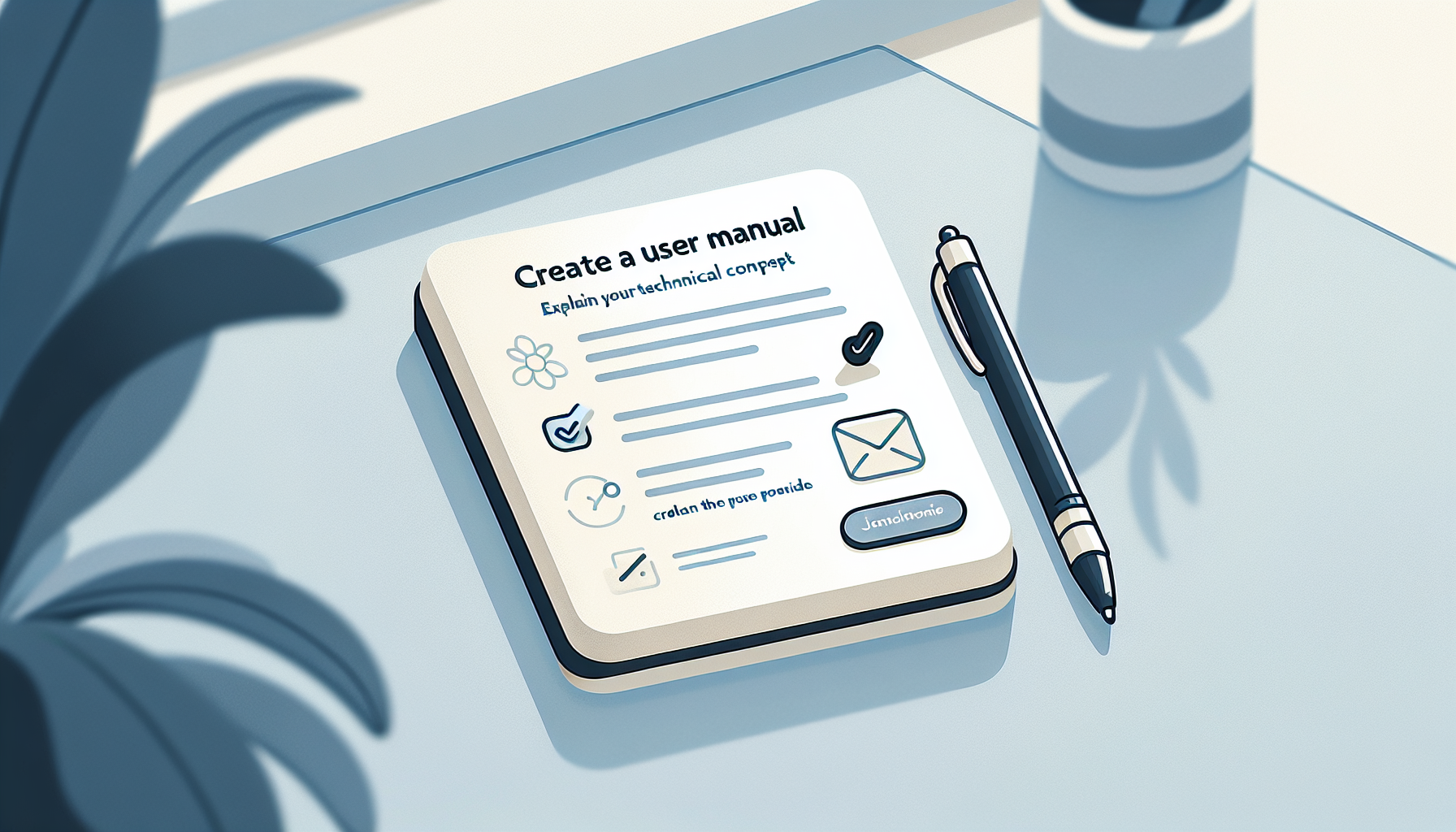Creating technical documentation can feel like wrestling an octopus—just when you think you’ve got a handle on one tentacle, another one slips away. Many of us struggle to find the right prompts to generate clear, user-friendly documents that actually make sense to our audience. You’re not alone if you’ve felt stuck or overwhelmed by the process!
But what if I told you that there’s a way to simplify it all? By using ChatGPT, you can streamline your documentation efforts, creating everything from user manuals to API guides with ease. Stick around, and I’ll walk you through some essential prompts and techniques that will save you time and frustration.
In this guide, you’ll discover effective ways to harness ChatGPT for all your technical documentation needs. From crafting troubleshooting guides to best practices that ensure clarity, you’ll be equipped to make your writing shine. Let’s dive in!
Key Takeaways
- Use ChatGPT to streamline the creation of technical documentation without getting overwhelmed.
- Essential prompts can help draft outlines, introductions, and troubleshooting sections easily.
- Effective API documentation can be generated by outlining endpoints and providing examples.
- Creating user manuals is simplified with step-by-step guides and troubleshooting steps.
- Maintain clarity by writing for your audience and structuring content with clear headings.
- Implement best practices and validation to ensure your technical documents are accurate and user-friendly.

Essential ChatGPT Prompts for Technical Documentation
Creating technical documentation can be a daunting task, but using ChatGPT can streamline the process significantly.
Here are some essential prompts you can use to help draft various types of technical documents:
- Generate a comprehensive outline for a technical document on [specific topic].
- Create a summary of key features for [specific software or tool].
- Draft a user-friendly introduction for a technical document focusing on [specific audience].
- Provide an overview of best practices in [specific area related to technology].
- List potential challenges faced during [specific technical process] and solutions for each.
These prompts can help you kickstart your writing process and ensure you cover essential aspects of your documentation.
How to Create User Manuals with ChatGPT
Creating user manuals with ChatGPT involves a straightforward process that can save time and increase clarity.
First, outline the main sections of your manual: Introduction, Getting Started, Features, Troubleshooting, and FAQs.
To provide structured content, use these prompts:
- Write an introduction for a user manual about [specific product or service].
- List step-by-step instructions for setting up [specific product].
- Explain how to utilize key features of [specific product].
- Develop a troubleshooting section that outlines common issues and solutions for [specific product].
By following these steps and using the prompts, you can create a user-friendly manual that helps users navigate your product effortlessly.
Using ChatGPT to Write API Documentation
If you’re looking to document your API, ChatGPT can be incredibly helpful in making the process clearer and more efficient.
Start with defining the endpoints, request parameters, and response objects.
Here are some useful prompts:
- Outline the main endpoints of [specific API] along with descriptions.
- Generate sample request and response examples for the endpoint [specific endpoint].
- Describe usage scenarios for integrating [specific API] in applications.
- Write an FAQ section addressing common developer questions about [specific API].
These prompts will guide you in creating detailed and comprehensible API documentation.
Generating Troubleshooting Guides with ChatGPT
When it comes to troubleshooting, a well-structured guide can be a lifesaver for users facing issues.
To generate effective troubleshooting guides with ChatGPT, you should first identify the most common problems users encounter.
Consider these prompts for your troubleshooting content:
- List common issues faced with [specific product] and their solutions.
- Write detailed steps to diagnose problems with [specific feature].
- Provide preventative tips for users to avoid common errors in [specific software].
- Create a flowchart to visualize steps for troubleshooting [specific issue].
By implementing these prompts, you can create a comprehensive troubleshooting guide that aids users in resolving their issues efficiently.

Creating Installation Instructions Using ChatGPT
Developing clear installation instructions is crucial for user satisfaction and success.
ChatGPT can help you draft straightforward installation steps without overwhelming your users.
Here are some prompts to utilize:
- Provide a step-by-step guide for installing [specific software or hardware].
- Outline the prerequisites needed before installing [specific product].
- Write a section on common installation issues and their solutions related to [specific setup].
- Develop a summary of troubleshooting tips during installation of [specific product].
By using these prompts, you can create a user-friendly installation guide that minimizes confusion and supports a smooth setup process.
Leveraging ChatGPT for Software Development Documentation
Software development documentation is essential for maintaining clear communication among team members.
ChatGPT can help you create concise and comprehensive documentation tailored for developers.
Here are some actionable prompts you can use:
- Draft a project overview that includes objectives and milestones for [specific software project].
- Create a coding standards guideline to ensure consistency across the codebase for [specific team or project].
- List key features and functionalities of [specific software] along with their technical specifications.
- Generate a collaborative documentation outline that details contributions for each team member in [specific project].
Implementing these prompts can streamline the documentation process, making it easier for your team to stay aligned throughout the development cycle.
Best Practices for Writing Technical Documentation with ChatGPT
Writing technical documentation requires clarity and precision to be effective.
With ChatGPT, adhering to best practices can enhance the quality of your content.
Consider these tips:
- Define your audience and tailor the content to their technical level.
- Use prompts like “Explain [specific topic] for a beginner” or “Describe [specific process] in simple terms.”
- Ensure accuracy by validating AI-generated content against trusted resources.
- Structure your documentation with clear headings and bullet points for easy navigation.
By focusing on these best practices, you can create effective technical documentation that meets user needs while leveraging the capabilities of ChatGPT.
Enhancing Clarity in Technical Writing with ChatGPT
Clarity is vital in technical writing to avoid confusion and frustration.
ChatGPT can assist you in simplifying complex information so that it’s easy to grasp.
Try these prompts to enhance clarity:
- Rewrite this section of technical text to be more accessible for general readers: [insert text].
- Provide examples of [specific technical concept] that are relatable and easy to understand.
- Create a glossary of terms for [specific topic] to help readers familiarize themselves with jargon.
- Summarize a lengthy technical document into a one-page overview highlighting key points.
Utilizing these prompts can facilitate better comprehension for your audience, ensuring they can navigate your technical documents with ease.

Examples of ChatGPT Prompts for Technical Documentation
Using specific examples of prompts can enhance your documentation process with ChatGPT.
Here’s a list of valuable prompts you can copy and paste straight into the chat:
- Create a complete user manual for [specific software] tailored to beginners.
- Draft an overview of the installation procedure for [specific hardware or software].
- Generate a section for API documentation that includes endpoint details and usage scenarios for [specific API].
- List and explain troubleshooting steps for common errors encountered in [specific product].
- Provide a summary of key best practices when using [specific technology or software].
These prompts cover a range of documentation needs and can support you in creating high-quality technical documents.
Tips for Crafting Effective Prompts for Technical Content
Crafting effective prompts is key to getting accurate and useful responses from ChatGPT.
Here’s how you can enhance your prompt writing:
- Be clear and specific in your instructions, such as “List the top five features of [specific product] and explain each.”
- Use descriptive keywords to guide the AI, like “Generate a detailed troubleshooting guide for [specific issue].”
- Consider the audience when writing prompts. For example, “Explain [technical concept] to someone with no tech background.”
- Experiment with different styles by asking ChatGPT to respond in various tones, such as “Write a casual overview of [specific topic].”
These tips will empower you to get the most out of ChatGPT to create functional and user-friendly technical content.
Common Mistakes to Avoid When Using ChatGPT for Documentation
While using ChatGPT can simplify documentation, avoiding certain pitfalls can ensure better output.
Here are some common mistakes and how to steer clear of them:
- Avoid vague prompts like “Explain this topic.” Instead, specify what you want: “Explain the importance of error handling in APIs.”
- Don’t neglect to cross-check the AI-generated information for accuracy and relevance.
- Ensure that prompts are not overly complex; break them into simpler tasks when necessary.
- Remember to review and edit the provided content to suit your documentation style and audience needs.
Staying mindful of these common mistakes will help you produce more effective technical documentation with ChatGPT.
FAQs
Essential prompts include queries for user manuals, API documentation, installation guides, and troubleshooting steps. Tailoring prompts to specific needs ensures that the generated content is relevant and user-friendly.
To enhance clarity, ask ChatGPT to simplify complex terms, break down processes into steps, and provide examples. Clear instructions and thorough explanations improve user comprehension and usability of the documentation.
Avoid vague prompts that lead to generic responses, overlook user perspectives, and neglect context. Ensure prompts are specific and aligned with user needs for accurate and effective documentation.
Best practices include using clear and concise language, structuring content logically, and integrating usability tests. Regularly review and update documentation to keep it relevant and useful for users.
